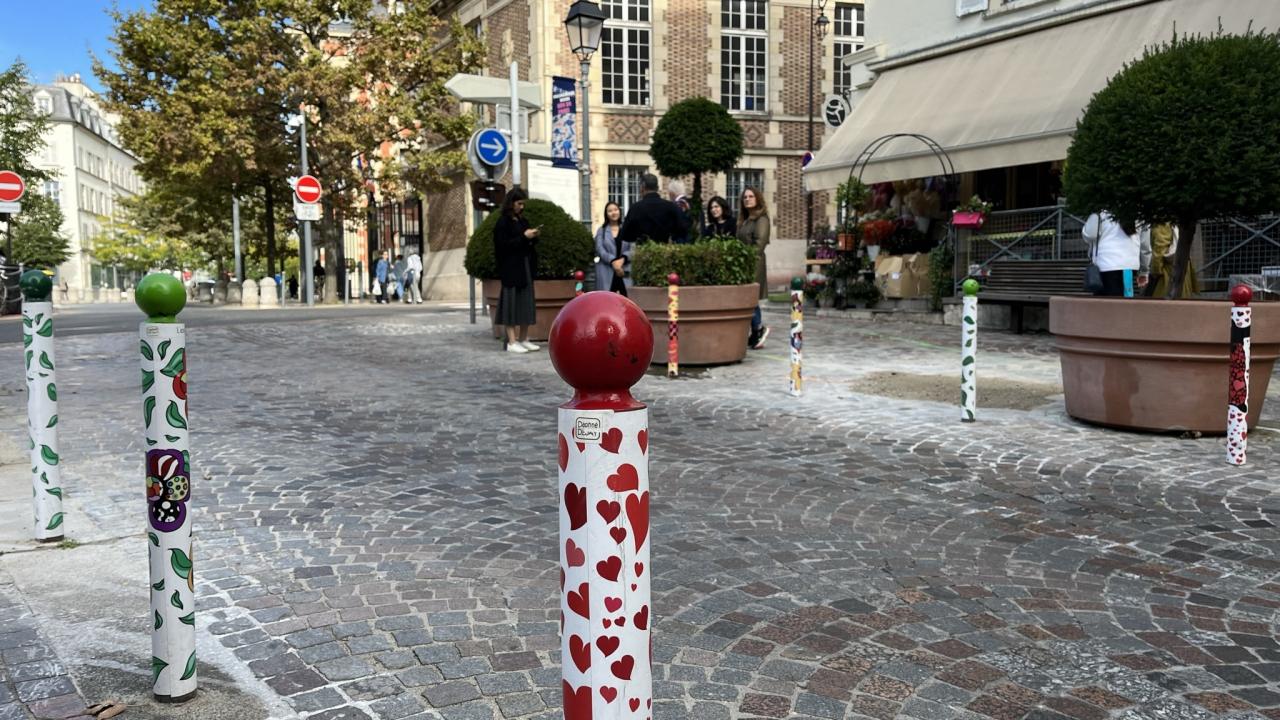Cities@Heart is an URBACT Action Planning network bringing together ten urban areas from all across Europe. With three different time zones, contrasting demographics and over 12 official languages, the Cities@Heart network draws upon a diverse pool of urban professionals, civil servants and citizens dedicated to improving their downtown areas. Taking the form of an observatory, the network employs a broad approach to improving city centres. Rather than focusing on one aspect of local economy or urban planning, Cities@Heart is working to develop a tool to measure factors contributing to the success of city centres in places as diverse as Sligo, Ireland or Lamia, Greece, two of the project partners.
A network to rethink public policies, governance models and decision-making tools for city centres
As a response to this multifaceted challenge of city centre management, Cities@Heart proposes the creation of a shared methodology applicable to different types of urban contexts. Relying on a bottom-up approach integrating data management, this accessible, user-friendly framework will support decision-making processes as well as the implementation and efficiency of cross-cutting sustainable urban policies.
The Cities@Heart methodology is based on five fundamental pillars:
Governance: exploring existing models of town centre management (public vs. private, formal vs. informal) and new paradigms of participatory agreements among stakeholders in the form of multi-level partnership
Integrated Public Policies: deploying policies that cut across multiple policy domains (housing, public services, mobility, public space, commerce, etc.)
Decision-Making Tools: integrating data and indicators to support the analysis, formulation, and monitoring of implemented actions
Sustainability: ensuring urban centres can adapt to climate change despite facing greater difficulties in comparison to the rest of the city (such as scarcity and limited space in public areas, a poorly maintained built environment, household incomes incapable of coping with transformation, etc.).
Inclusion: providing optimal living conditions for all residents (regardless of gender, age, or background) and promoting personal autonomy through inclusive care

The ten network partners include:
The Greater Paris Metropolis, France (Lead Partner)
The City of Cesena, Italy
The City of Granada, Spain
The City of Osijek, Croatia
Amfiktyonies, a business development organisation representing the City of Lamia, Greece
The City of Celje, Slovenia
The City of Fleurus, Belgium
The City of Sligo, Ireland
The Krakow Metropolis Association, Poland
The Quadrilátero Urbano Association, Portugal
The Cities@Heart Baseline Study
Within the context of the URBACT methodology, each Lead Partner must conduct visits with the different partners comprising the network. These study visits allow the Lead Partner and Lead Expert to better understand the local context for each project partner all while revealing the commonalities shared across the network. During this phase, from June to December 2023, each partner in the network had the opportunity to host a visit in order to highlight their best practices but also their challenges: gentrification and over-tourism, adaptation to climate change, overuse or conviviality in the public space, improvement of local commerce networks and integration of new habits of consumption, creating a sense of belonging and identity, coordination between the public and private sectors or bolstering efforts for more inclusion and gender equality in the public space.
Over the course of the Baseline Study, the network has also identified innovative solutions to these challenges in addition to methods for capacity building and scaling actions: collaborative models of town-centre management, data observatories and sectorial indicator tools, strategies to renovate listed buildings, greening initiatives for the public space, monitoring of tourism, revitalisation of vacant premises, night-life economy initiatives, creation of new commercial polarities around local markets or enlivening the city centre through festivals or citizen-based initiatives.
Contextual Examples from the Network
City centres have undergone significant changes in the past century. To understand the context of Cities@Heart, it is important to provide a brief historical background. With the advent of industrialisation, the early 1900’s witnessed the rapid growth of cities in Europe. These new metropolises developed and gradually endowed themselves with new, more modern infrastructure and services. By the mid-20th Century, a phenomenon of urban sprawl could be observed, with peripheral, “sub-urban” areas offering a higher standard of living than the historic centres, then perceived as dense, unhealthy, and obsolete.
However, starting in the second half of the 20th century, an awareness of the importance of historic centres began to emerge. European urban centres became a prominent target for urban regeneration initiatives. City centres started to be recognised for their crucial role in urban dynamics and social cohesion. From the 1970s, city management started directing resources to the historic centre. These oftentimes obsolete and abandoned central spaces gained prominence in spite of contradictory policies encouraging unlimited urban development in the preceding decades. In response to the renewed concern for urban areas, city centres are now poised to become the focus of urban transformation and revitalization initiatives.
Today, city centres still represent an opportunity to address structural challenges in the transition to new urban models fuelled by the green transition and grounded in the principles of proximity. As proposed by urbanist Carlos Moreno in the 15 minute-city paradigm, town centres have the potential to provide most essential services within a short walking distance: community-scale education and healthcare, retail, parks for recreation, working spaces and more. This hyper-local framework has the potential to generate dynamic local growth, stronger communities, viable businesses and commerce, active mobility, and in turn reduced emissions.
However, the configuration of contemporary city centres also creates conflicting urban realities where several functions coexist in permanent tension. Transition can come at a price. A high quality of life in the city centre also requires healthy environments, efficient infrastructure, and easy access to amenities. In addition to basic everyday amenities , citizens also need to have opportunities to develop economic activities that increase wealth and social mobility. City centres are tasked with providing housing to a diverse population, prioritising affordable housing, catering to diverse socio-economic groups and fostering inclusivity, all while ensuring accessibility to public spaces that enrich communal bonds, promote well-being and create a sense of belonging.
The Next Steps for the Cities@Heart Network
The URBACT framework enables the transfer of knowledge on transnational and local levels, promoting capacity building activities, the development of local action plans together with stakeholders (the ULG or Urban Local Groups) and the dissemination of results with the aim to transfer this evidence-based and integrated approach to other urban contexts.
An interdisciplinary, complex subject matter, city centres are certainly worth observing. Observing the core of the city provides insight to broader national and global trends. Addressing social and urbanistic issues in the city centre may in turn yield more positive effects on the greater urban area, creating more spaces for people to meet and create engagement in their communities. As the Cities@Heart Baseline Study comes to a close, the network partners are looking forward to two more years of collaboration, using the road map generated by the findings of this investigatory period.


